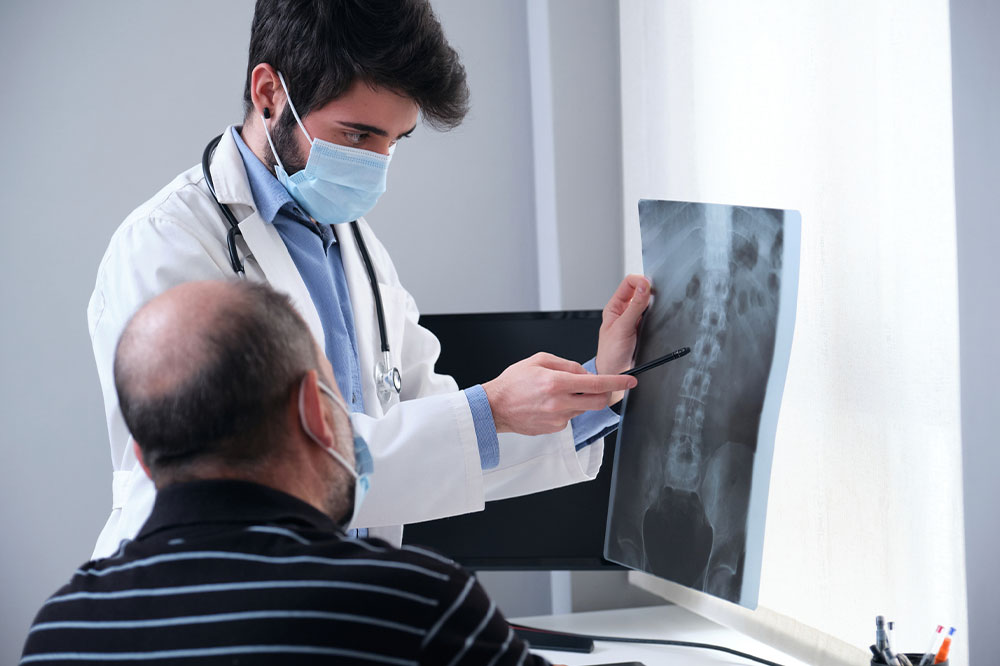Ankylosing Spondylitis – Causes, Symptoms, and Management

From facilitating erect posture to ensuring body structure, the spine performs numerous functions and is an indispensable part of the human body. Thus, health issues concerning the spine and back, including ankylosing spondylitis, can be debilitating, requiring early diagnosis, timely treatment, and adequate care. This article provides a detailed insight into ankylosing spondylitis, its causes and symptoms, treatment options, and some lifestyle tips to help patients cope better with the condition.
What is ankylosing spondylitis?
Belonging to a group of diseases classified as spondyloarthropathies, ankylosing spondylitis (AS) is a health condition wherein the vertebral bones fuse over time, causing severe pain and stiffness. Such pain is particularly prevalent in the lower back, buttocks, and hips. It hampers mobility considerably and is classified as a form of arthritis. Specifically, AS is the advanced stage of sacroiliitis, characterized by inflammation of the sacroiliac joints between the spinal base and the pelvis. Studies reveal that 13 in 1,000 people in the country are diagnosed with this disease.
Risk factors for ankylosing spondylitis
Although the exact cause of AS is unknown, some risk factors can contribute to the onset of this condition:
Genetic factors
Individuals with a gene known as HLA-B27, proteins classified as antigens, are at a higher risk of acquiring AS than others. However, not all individuals with this gene may develop a health condition. Further, individuals with close relatives, such as parents or siblings, diagnosed with AS are 10-20 times more susceptible to the disease than those with no such family history.
Racial predisposition
Studies suggest that AS is more prevalent among Caucasians, possibly due to the increased presence of the HLA-B27 gene in Caucasian individuals. It has been found that up to 95% of Caucasians have this gene, considerably increasing their risk of developing this disease.
Uveitis
Some studies demonstrate that uveitis, characterized by inflammation of the uvea or center of the eye, can increase one’s risk of developing AS. According to one study, 50% of individuals with AS had uveitis at least once. The inflammatory factors causing the two health conditions are the same; consequently, these diseases are commonly associated.
Inflammatory bowel disease
Inflammatory bowel disease (IBD) and AS are highly interconnected, as one of these conditions can trigger the other. In one research study, 3-4% of patients with AS were already grappling with IBD during their AS diagnosis. Conversely, AS can also increase one’s risk factor for developing IBD.
Symptoms of ankylosing spondylitis
Stiffness in the lower back and hips
A common symptom of AS is stiffness in the lower back and hip regions, particularly in the mornings or after spells of inactivity.
Fatigue
Individuals with AS often face chronic fatigue, which does not diminish with sleep and rest. The constant pain and rigidity caused by AS can significantly contribute to such fatigue.
Inflammation in other joints
Other joints, such as the knees, shoulders, and feet, are also typically affected by AS. Pain and stiffness in these joints are common AS symptoms and can worsen with time.
Curved spine
The spine often becomes curved due to the fusion of the vertebral bones. Thus the postures of patients with AS are often compromised.
Difficulty in breathing
AS can trigger the onset of lung inflammation or pulmonary fibrosis, accompanied by chest tightness. Such comorbidities can cause shortness of breath.
Flu-like symptoms
Patients with AS may develop flu-like symptoms such as fever and chills during the early stages of AS. Some individuals diagnosed with AS also report night sweats.
Sleep issues
Since pain increases with inactivity among individuals with AS, sleep issues are common AS symptoms. A study shows that up to 90% of persons with the condition were suffering from sleep issues.
Jaw inflammation
Patients with AS are likely to develop temporomandibular joint (TMJ) disorder, involving swelling and inflammation of the jaw. Jaw inflammation can cause difficulties in eating, sleeping, and talking.
Treatment options
Physical therapy
One way to alleviate the symptoms of AS is through physical therapy, which entails a range of exercises to increase strength and flexibility. These exercises can also improve posture significantly. Some activities included under PT are strengthening exercises, deep breathing, posture training, and stretching.
Surgery
Although surgery is not a recommended treatment option for most, it may be prescribed to patients with extremely severe pain or serious hip-joint damage.
Acupuncture
Acupuncture is an age-old practice that can help with pain relief, particularly among individuals suffering from lower back pain, neck pain, etc. Thus, it may be an effective technique to relieve AS symptoms.
Ways to deal with ankylosing spondylitis
Have nutritious meals
A meal plan rich in calcium sources, such as milk, yogurt, tofu, lentils, almonds, and leafy vegetables, is ideal for patients with AS. Foods rich in vitamins, minerals, and magnesium are also important for treating AS symptoms. One must incorporate plenty of fruits and vegetables and avoid foods that trigger or worsen inflammation, such as deep-fried and processed foods.
Avoid long spells of inactivity
AS symptoms typically improve with movement; therefore, patients with AS must engage in low-intensity physical activities like walking, jogging, low-impact aerobics, and stretching. A physiotherapist can guide patients with the most effective exercises for AS.
Maintain good posture
An erect posture goes a long way in preventing the worsening of AS symptoms. Thus, from the early stages of the condition, it is advisable to practice maintaining a good posture and seeking help from a physiotherapist.
Regulate your sleep schedule
Having a good sleep cycle is crucial to fighting the symptoms of AS. Although sleep is often compromised among patients with AS, following tips like regular exercise, sleeping on a firm mattress, using a thin pillow, and controlling the bedroom temperature before sleeping can facilitate better sleep among those with AS.
Get professional massages periodically
Professional back massages can help calm the body and mind in multiple ways, improving mobility and facilitating pain relief. Regular back massages are recommended for symptom relief among patients with AS.






